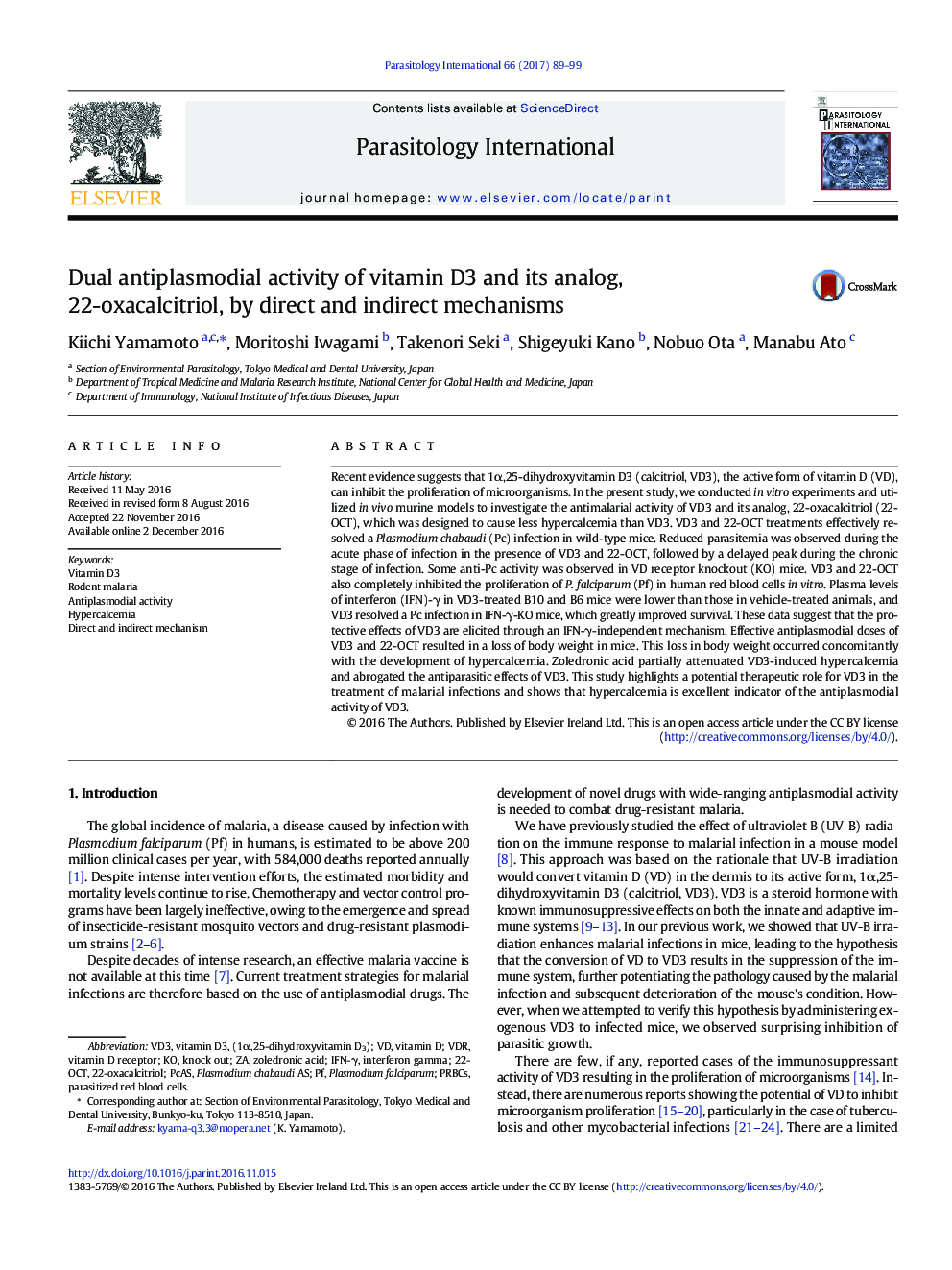| کد مقاله | کد نشریه | سال انتشار | مقاله انگلیسی | نسخه تمام متن |
|---|---|---|---|---|
| 5674168 | 1408219 | 2017 | 11 صفحه PDF | دانلود رایگان |

- Extensive inhibition of parasitemia by VD3 in acute phase
- Delayed parasitemia peak in chronic phase is independent on mortality.
- Hypercalcemia links to anti-plasmodial activity.
- Anti-plasmodial activity of VD3 in B6 or B10 mice is IFN-γ independent mechanism.
- In vitro anti-plasmodial activity was confirmed with VDR-KO mice in vivo.
Recent evidence suggests that 1α,25-dihydroxyvitamin D3 (calcitriol, VD3), the active form of vitamin D (VD), can inhibit the proliferation of microorganisms. In the present study, we conducted in vitro experiments and utilized in vivo murine models to investigate the antimalarial activity of VD3 and its analog, 22-oxacalcitriol (22-OCT), which was designed to cause less hypercalcemia than VD3. VD3 and 22-OCT treatments effectively resolved a Plasmodium chabaudi (Pc) infection in wild-type mice. Reduced parasitemia was observed during the acute phase of infection in the presence of VD3 and 22-OCT, followed by a delayed peak during the chronic stage of infection. Some anti-Pc activity was observed in VD receptor knockout (KO) mice. VD3 and 22-OCT also completely inhibited the proliferation of P. falciparum (Pf) in human red blood cells in vitro. Plasma levels of interferon (IFN)-γ in VD3-treated B10 and B6 mice were lower than those in vehicle-treated animals, and VD3 resolved a Pc infection in IFN-γ-KO mice, which greatly improved survival. These data suggest that the protective effects of VD3 are elicited through an IFN-γ-independent mechanism. Effective antiplasmodial doses of VD3 and 22-OCT resulted in a loss of body weight in mice. This loss in body weight occurred concomitantly with the development of hypercalcemia. Zoledronic acid partially attenuated VD3-induced hypercalcemia and abrogated the antiparasitic effects of VD3. This study highlights a potential therapeutic role for VD3 in the treatment of malarial infections and shows that hypercalcemia is excellent indicator of the antiplasmodial activity of VD3.
Journal: Parasitology International - Volume 66, Issue 2, April 2017, Pages 89-99